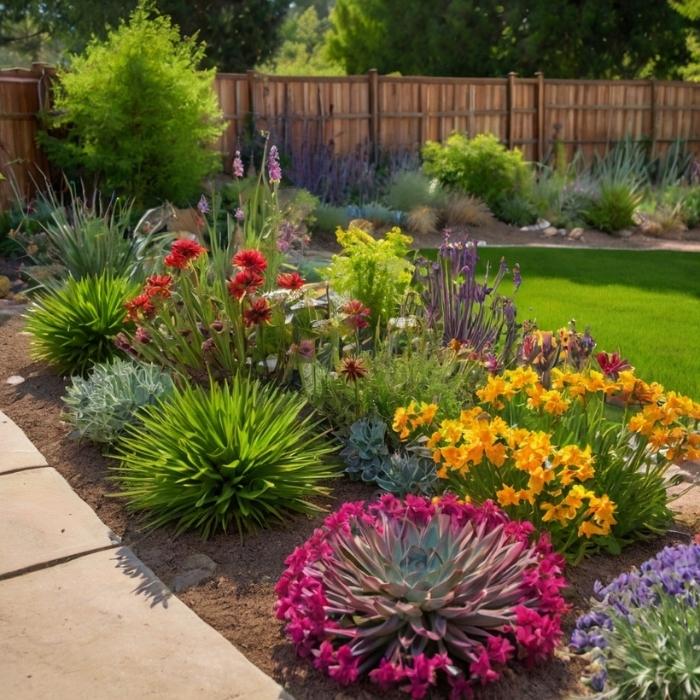Drought Tolerant Perennials: A Sustainable Choice for Your Garden
As climate change continues to impact weather patterns, water conservation has become a critical concern for gardeners. Drought-tolerant perennials are an excellent solution for those looking to maintain a vibrant garden while minimizing water usage. These resilient plants not only survive but thrive in dry conditions, providing beauty and sustainability to your landscape.What Are Drought Tolerant Perennials?Drought-tolerant perennials are plants that can withstand dry conditions once established. Unlike annuals, which complete their life cycle in one growing season, perennials return year after year, making them a more sustainable choice for long-term gardening. These plants have developed various adaptations to conserve water, such as deep root systems and specialized foliage that reduces evaporation.Benefits of Drought Tolerant Perennials
- Water Conservation: These plants require less frequent watering, making them ideal for regions with limited rainfall or during drought periods.
- Low Maintenance: Once established, drought-tolerant perennials often need minimal care compared to traditional garden plants.
- Biodiversity: Many drought-tolerant species attract beneficial insects like bees and butterflies, promoting a healthy ecosystem in your garden.
- Soil Health: Their deep root systems improve soil structure and help prevent erosion, contributing to overall soil health.
- Aesthetic Appeal: Drought-tolerant perennials come in various colors, shapes, and sizes, allowing for diverse and visually appealing garden designs.
Top Drought Tolerant Perennials to Consider
Here are some of the best drought-tolerant perennials that can enhance your garden:
- Echinacea (Coneflower): Known for its daisy-like flowers in vibrant colors, coneflowers are not only drought-resistant but also attract pollinators.
- Lavender (Lavandula): This aromatic herb thrives in sunny spots with well-drained soil, providing beautiful purple blooms and a delightful fragrance.
- Yarrow (Achillea): With its fern-like foliage and bright flower clusters, yarrow is a hardy perennial that adds color to dry gardens.
- Sedum (Stonecrop): Sedums are succulents that store water in their leaves, making them perfect for rock gardens or as ground cover in sunny areas.
- Russian Sage (Perovskia atriplicifolia): This plant features silvery foliage and tall spikes of lavender-blue flowers. It’s low-maintenance once established and thrives in dry conditions.
- Gaura (Gaura lindheimeri): Known for its delicate flowers that sway in the breeze, gaura is a long-blooming perennial that does well in full sun and well-drained soil.
- Catmint (Nepeta): This hardy perennial produces beautiful purple flowers and is nearly carefree once established. It’s an excellent substitute for lavender in cooler climates.
- Coreopsis (Tickseed): With bright yellow flowers that bloom profusely throughout the summer, coreopsis is a cheerful addition to any drought-tolerant garden.
- Rudbeckia (Black-eyed Susan): These vibrant yellow flowers with dark centers are not only drought-resistant but also attract butterflies and other pollinators.
- Salvia (Sage): Many varieties of salvia are drought-tolerant and provide stunning spikes of color while attracting hummingbirds to your garden.
Tips for Growing Drought Tolerant Perennials
To ensure the success of your drought-tolerant perennials:
- Soil Preparation: Before planting, enrich your soil with organic matter like compost to improve moisture retention.
- Mulching: Apply organic mulch around your plants to reduce evaporation and keep the soil cool during hot weather.
- Watering Schedule: While these plants are drought-resistant once established, they need regular watering during their initial growth phase. Aim for deep watering less frequently rather than shallow watering often.
- Planting Strategy: Group drought-tolerant plants together based on their water needs. This allows you to create microclimates within your garden and optimize water usage.
- Observe and Adapt: Pay attention to how your plants respond to their environment. Adjust watering schedules or plant placements based on their performance.
Conclusion
Incorporating drought-tolerant perennial into your garden is a smart choice for both environmental sustainability and aesthetic appeal. By selecting the right plants and following best practices for care, you can create a beautiful landscape that thrives even in challenging conditions. Embrace these resilient species to enjoy a flourishing garden while conserving precious water resources.

